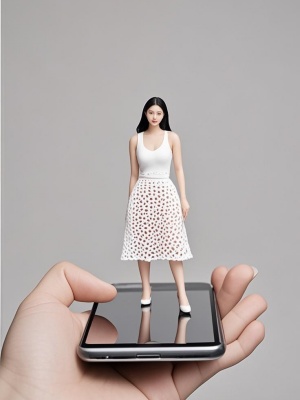The Art of Portraiture: Capturing the Essence of Humanity
Introduction: The Timeless Appeal of Portraiture
The art of portraiture has captivated artists and audiences for centuries, serving as a powerful medium to capture human emotion, identity, and history. From ancient Egyptian funerary portraits to Renaissance masterpieces and modern AI-generated art, portraiture continues to evolve while maintaining its core purpose: revealing the essence of the human experience.
This comprehensive exploration of portrait art will examine its historical significance, technical challenges, psychological depth, and contemporary innovations. Whether you're an artist seeking to improve your portrait techniques or an art enthusiast wanting to deepen your appreciation, this guide offers valuable insights into this fascinating art form.
The Historical Evolution of Portrait Art
From Ancient Traditions to Modern Expressions
Portraiture has served diverse purposes throughout history:
- Ancient world: Funerary portraits in Egypt, realistic busts in Rome
- Renaissance: Emergence of individual personality in portraits
- 19th century: Photography revolutionizes portrait accessibility
- Modern era: Abstract and experimental approaches to portraiture
Notable examples include Leonardo da Vinci's Mona Lisa, Rembrandt's self-portraits, and contemporary works like AI-transformed portraits that blend traditional techniques with digital innovation.
Technical Mastery in Portrait Creation
Overcoming the Challenges of Human Representation
Creating compelling portraits requires solving several artistic problems:
| Problem | Solution |
|---|---|
| Capturing likeness | Mastering proportions and facial anatomy |
| Conveying personality | Careful observation of expressions and posture |
| Creating depth | Skillful use of light and shadow (chiaroscuro) |
Modern tools like AI photo enhancement can assist artists in refining their portraits, but the fundamental skills of observation and representation remain essential.
The Psychology of Portraiture
Portraits create a unique connection between subject, artist, and viewer. Studies in neuroaesthetics suggest that:
- Human brains are wired to respond strongly to faces
- Portraits activate empathy centers in the brain
- Eye contact in portraits creates a powerful psychological connection
This explains why portrait art remains so compelling across cultures and historical periods. Contemporary research from institutions like the National Institutes of Health continues to explore our neurological responses to facial representations.
Contemporary Innovations in Portrait Art
The digital age has transformed portraiture with new possibilities:
- 3D scanning and printing technologies
- Interactive digital portraits
- AI-generated portraits that blend styles
- Augmented reality portrait experiences
Platforms like MediaAI's gallery showcase how technology is expanding the boundaries of traditional portraiture while maintaining its emotional impact.
Conclusion: The Enduring Power of Portraiture
The art of portraiture continues to thrive because it fulfills a fundamental human need - to see ourselves reflected and understood. From traditional oil paintings to cutting-edge AI-assisted creations, portraits remain one of the most direct forms of artistic communication.
As we look to the future, the essence of portraiture - capturing human identity and emotion - will persist even as the tools and techniques evolve. Whether created with brush and canvas or digital algorithms, powerful portraits will continue to move us, challenge us, and help us understand what it means to be human.
